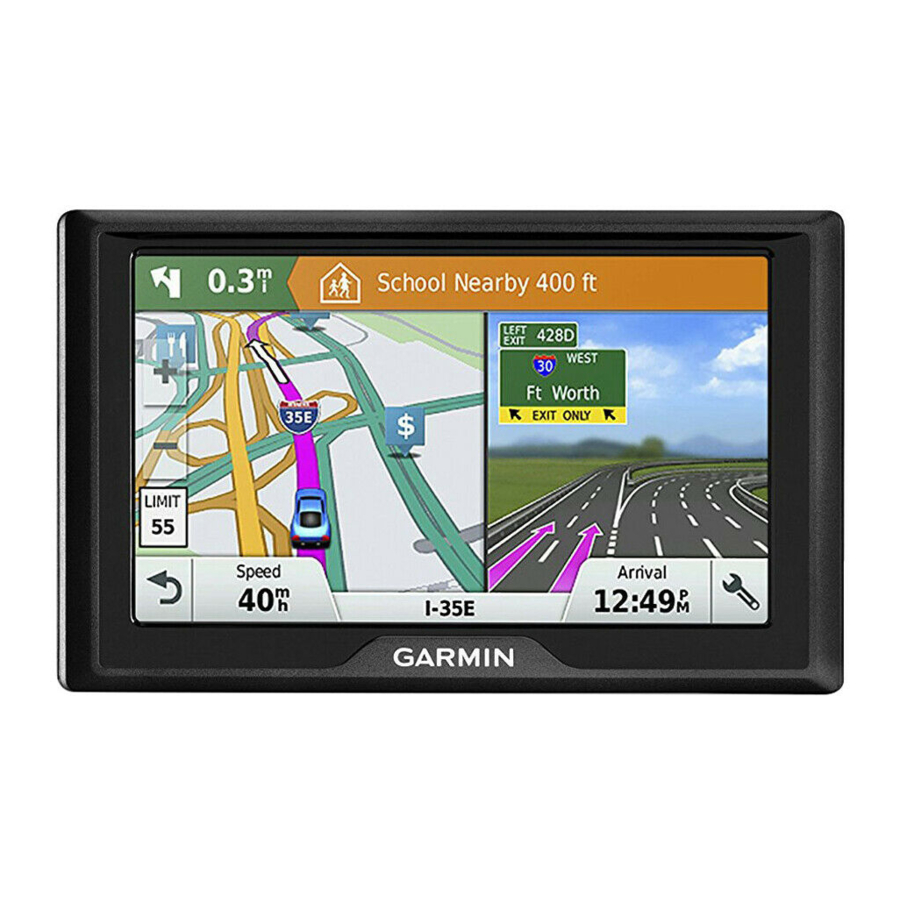Garmin Fenix 5s Manuale d'uso - Pagina 19
Sfoglia online o scarica il pdf Manuale d'uso per Guarda Garmin Fenix 5s. Garmin Fenix 5s 48.
Anche per Garmin Fenix 5s: Manuale d'uso (27 pagine)

Tips for Missing Running Dynamics Data
If running dynamics data does not appear, you can try these
tips.
• Make sure you have a running dynamics accessory, such as
the HRM-Run accessory.
Accessories with running dynamics have
module.
• Pair the running dynamics accessory with your D2 device
again, according to the instructions.
• If the running dynamics data display shows only zeros, make
sure the accessory is worn right-side up.
NOTE: Ground contact time and balance appears only while
running. It is not calculated while walking.
Performance Measurements
These performance measurements are estimates that can help
you track and understand your training activities and race
performances. The measurements require a few activities using
wrist-based heart rate or a compatible chest heart rate monitor.
Cycling performance measurements require a heart rate monitor
and a power meter.
These estimates are provided and supported by Firstbeat. For
more information, go to www.garmin.com/physio.
NOTE: The estimates may seem inaccurate at first. The device
requires you to complete a few activities to learn about your
performance.
Training status: Training status shows you how your training
affects your fitness and performance. Your training status is
based on changes to your training load and VO2 max. over
an extended time period.
VO2 max.: VO2 max. is the maximum volume of oxygen (in
milliliters) you can consume per minute per kilogram of body
weight at your maximum performance.
Recovery time: The recovery time displays how much time
remains before you are fully recovered and ready for the next
hard workout.
Training load: Training load is the sum of your excess post-
exercise oxygen consumption (EPOC) over the last 7 days.
EPOC is an estimate of how much energy it takes for your
body to recover after exercise.
Predicted race times: Your device uses the VO2 max. estimate
and published data sources to provide a target race time
based on your current state of fitness. This projection also
presumes you have completed the proper training for the
race.
HRV stress test: The HRV (heart rate variability) stress test
requires a Garmin chest heart rate monitor. The device
records your heart rate variability while standing still for 3
minutes. It provides your overall stress level. The scale is 1 to
100, and a lower score indicates a lower stress level.
Performance condition: Your performance condition is a real-
time assessment after 6 to 20 minutes of activity. It can be
added as a data field so you can view your performance
condition during the rest of your activity. It compares your
real-time condition to your average fitness level.
Heart Rate Features
Functional threshold power (FTP): The device uses your user
profile information from the initial setup to estimate your FTP.
For a more accurate rating, you can conduct a guided test.
Lactate threshold: Lactate threshold requires a chest heart rate
monitor. Lactate threshold is the point where your muscles
start to rapidly fatigue. Your device measures your lactate
on the front of the
threshold level using heart rate data and pace.
Turning Off Performance Notifications
Performance notifications are turned on by default. Some
performance notifications are alerts that appear upon completion
of your activity. Some performance notifications appear during
an activity or when you achieve a new performance
measurement, such as a new VO2 max. estimate.
1
Hold UP.
2
Select Settings > Physiological Metrics > Performance
Notifications.
3
Select an option.
Detecting Performance Measurements Automatically
The Auto Detection feature is turned on by default. The device
can automatically detect your maximum heart rate, and lactate
threshold during an activity. When paired with a compatible
power meter, the device can automatically detect your functional
threshold power (FTP) during an activity.
NOTE: The device detects a maximum heart rate only when
your heart rate is higher than the value set in your user profile.
1
Hold UP.
2
Select Settings > Physiological Metrics > Auto Detection.
3
Select an option.
Syncing Activities and Performance Measurements
You can sync activities and performance measurements from
other Garmin devices to your D2 Charlie device using your
Garmin Connect account. This allows your device to more
accurately reflect your training status and fitness. For example,
you can record a ride with an Edge device, and view your
activity details and overall training load on your D2 Charlie
device.
1
Hold UP.
2
Select Settings > Physiological Metrics > TrueUp.
When you sync your device with your smartphone, recent
activities and performance measurements from your other
Garmin devices appear on your D2 Charlie device.
Training Status
Training status shows you how your training affects your fitness
level and performance. Your training status is based on changes
to your training load and VO2 max. over an extended time
period. You can use your training status to help plan future
training and continue improving your fitness level.
Peaking: Peaking means that you are in ideal race condition.
Your recently reduced training load is allowing your body to
recover and fully compensate for earlier training. You should
plan ahead, since this peak state can only be maintained for
a short time.
Productive: Your current training load is moving your fitness
level and performance in the right direction. You should plan
recovery periods into your training to maintain your fitness
level.
Maintaining: Your current training load is enough to maintain
your fitness level. To see improvement, try adding more
variety to your workouts or increasing your training volume.
Recovery: Your lighter training load is allowing your body to
recover, which is essential during extended periods of hard
training. You can return to a higher training load when you
feel ready.
13
